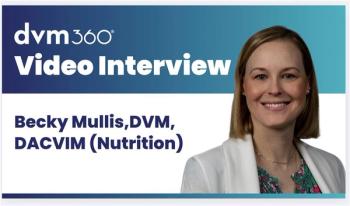
An ever-changing profession
For most members of the veterinary industry, it’s clear that evolution unrelated to medicine is moving at the speed of light.
Many hospitals are so hungry to find new doctors that anyone with a doctor of veterinary medicine license and a pulse is given serious consideration. It wasn’t long ago that those same owners or managers were sifting through piles of CVs with the luxury of only looking closely at those with 2 to 4 years of experience under their belt.
The same practices that were slowly moving toward a business model that used only licensed veterinary technicians for the most critical tasks are now resigning themselves to the fact that a well-trained assistant will have to suffice whenever legally appropriate. Droves of hospitals that have never been fortunate to have a single certified, registered, or licensed veterinary technician so much as walk inside their building are now statistically distanced from the possibility of that ever happening.
Some successful practices—those with a facility located in a decent-sized city, and with a stable doctor staff—have taken the huge step to expand to 24/7 operations only to find their once stable doctor staff disappear before their eyes, precipitating a step backward to a daytime-only urgent care model.
What’s happening and why?
It’s not that growth in pet ownership and the deepening human-animal bond have outpaced the supply of practitioners to meet their needs. That shift has been gradual—it began in earnest 5 to 8 years ago—and subtle enough to not have industry-shaking consequences.
It’s not that burnout and compassion fatigue have resulted in a meaningful drop in our workforce. This, too, has been a relatively consistent force in our industry for many years. Even the tragic reality of our industry’s suicide rate can’t be a significant factor. Despite the fact that even 1 case of suicide related to the stress of our industry is one too many, the fact is that this horrible issue has only relatively recently found its way to the media and is now being talked about throughout the profession; this does not mean it’s affecting a larger number of our colleagues.
It certainly isn’t that the affordability of veterinary care has inadvertently caused so many people to own a pet that we just can’t keep up with demand. The quality and cost of care have never been higher, and those members of society with less money have never been further away from affording the joys of a family pet. This is also at a time when more people than ever have less money.
A possible explanation? Something our industry has taken years to finally learn could ultimately be our undoing.
Anyone who’s attended an industry conference in the past 24 months has experienced the impact that talking about work-life balance has had. The message is everywhere: Take better care of yourself, work smarter not harder, use higher average transactions rather than higher volume to reach financial benchmarks, seek flex time, part-time, less time, etc. To be sure, I’m not criticizing the idea that we deserve to be healthier. We shouldn’t have to sacrifice family and important events just because Mrs Jones’ dog is sick and we don’t have to make ourselves available at all times to run a responsible business.
Our human medicine counterparts started figuring this out long ago as allied industries like dentistry and ophthalmology fit their comfortable practices into 4-day work weeks. Even family practice providers have discovered how the influx of urgent care facilities has made it possible to spend an appropriate amount of time with patients instead of 6 to 8 patients every hour and fast-tracking their concerns into the most important 1 or 2 things.
Veterinarians invest 8 years of college into their careers and carry the immense burden on a daily basis of knowing that the limitations of our medicine as well as the fact that we typically provide “womb-to-tomb” care will result in as many sad endings as happy ones. We reserve the right to work just 36 to 40 hours each week and to watch our kids’ school plays and sporting events. We also deserve not to go home every night so exhausted that we can’t recover from those challenging dark days in the clinic.
The ripples of evolution
So, if this is so great for us, what’s the downside?
One practice I worked for is a great example of how the evolution of our industry can have ripple effects. Over a matter of months, this 6-doctor practice experienced attrition for the same reasons many others have—geographical relocation, disinterest in providing after-hours care, and family-related shifts in the days and hours they are available or willing to work—and is now down to 2 doctors.
Decreasing our veterinarian staff so drastically so quickly is devastating, especially in an environment where job openings greatly outnumber candidates. A practice known for client accommodation and accessible fees found itself in a position where some of those things had to be reassessed. Logic would suggest that a practice that commonly squeezed patients in and double-booked appointments would be faced with doing that even more during a doctor shortage, and that better leveraging staff, instituting technician appointments, and ensuring ever-better customer service in an attempt to hold onto clients would be the only avenue that made sense. Or maybe not.
What if that extra demand on the practice was just what it took to finally push them past the breaking point and decide that they just couldn’t give anything more without becoming one of our industry’s burnout, career change, or suicide statistics? What if that practice stopped squeezing patients into their schedule, started placing restrictions on things like the turnaround time for prescription refills, and placing limits on how they manage the end of their days to ensure everyone gets out on time?
Because they’re operating at half staff, they began to believe that they are so busy that they no longer have to run a business that is competing for new clients or stressing over retention of their existing ones. Client demands begin to feel like an imposition, and the cross-section of all of our practices that is made up of the very high-maintenance pet owners no longer seems like something they want to bother with.
Clients have left practices for many different reasons including higher fees, lack of accommodating service, and an overall feeling that they now have to “jump through hoops” to get the care that used to be easy to get. Those clients have to go somewhere, and that somewhere is almost certainly a practice that also has little or no room for more clients. Boom! As quickly as you can snap your fingers, practices all over the nation are competing for a small pool of doctor candidates to expand to fill these needs, which is exactly where we find ourselves in the industry today.
A shift in client expectations
For all of those conference attendees, journal readers, or simply anyone remotely paying attention, this is just 1 of the 2 huge trains running at break-neck speed in our industry. The other one is the fact that we’re poised to experience a seismic shift in client expectations as millennials prepare to take their place as the largest pet-owning sector of society. They will do so not only because they will soon outnumber other generations, but also (and perhaps more significantly) because they have, in large numbers, prioritized pet ownership over having children. They’ve caused a huge drop in divorce rates in our country simply by not getting married in the first place. Instead of the standard 2-child nuclear family, they’re more likely to set aside any interest in starting a family and instead consider their 2 Labradoodles to be all the kids they’ll ever need (or want).
Sounds like a big win for the veterinary industry right? More household pets and more clients with discretionary spending money to care for them because those pet owners aren’t bogged down by the high cost of raising a child sounds pretty great.
Unfortunately, and no one seems to be talking about this, that train is running at full speed on a collision course with the work-life balance train.
To start, our industry doesn’t seem equipped to handle an influx in clients and patients as outlined above, unless we build a dozen veterinary colleges overnight and start spitting out more graduates.
Most importantly, regardless of how many veterinarians are out there, what the new generations want and expect as consumers directly conflict with an industry moving towards taking better care of ourselves.
Understanding young pet owners
Millennials and Gen-Zers want high-quality care for their fur babies but they also want it available at all times and with complete access. They don’t want to leave messages and get a callback tomorrow—they want to email or text you, or even better, use an app or portal unique to your practice, and they want a response in real-time.
Their fur baby that has a painful ear infection at midnight is no different than the boomer generation’s panic to have their infant’s broken arm seen immediately. This is at the same time that veterinary ER practices are disappearing across the country, dramatically limiting the options for young pet owners to receive the care they demand. Let’s face it, finding doctors dying to work overnight and on weekends isn’t easy.
That loud sound you hear is these 2 industry shifts running smack into each other and there’s no certainty who will pick those pieces up and what that will look like.
Where do we go from here?
There’s no denying the market forces of the next 2 generations—that’s an unstoppable force headed our way. Additionally, it would be regressive to even suggest that we reconsider the shift toward work-life balance—it’s taken many years and many lost colleagues (both figuratively and literally) to finally realize this is important—it’s an immovable object now and rightly so.
The answers may be in subtle areas. Manage your schedules more conservatively and strive to get your team members home on time, but don’t draw any lines in the sand. Create guidelines rather than regulations and keep some flexibility in your management. Continue to look for licensed technicians, but up train your assistants and leverage them more and more. Explore telemedicine to the degree that your state laws allow and invest in the technology to change the ways that clients can communicate with you. If you don’t have a staff member solely focused on electronic communication (appointment requests, emailed reminders, records transfers), it’s time you did so.
Finally, this is not the time to allow your services to be limited beyond the constraints of your schedule. Authorize legally allowable refills of chronic medications so your team can fill them without your direct involvement in between annual or medically necessary visits. Resist the temptation to become more restrictive in requiring a certain amount of advance notice to fill those prescriptions. Remember who built your practice—it wasn’t you; it was your clients.
Resist the urge to compartmentalize your support team—this is a slippery slope that never works in the end. This alleged need usually arises from the belief that we are so busy that our staff is best directed to focus on limited areas and develop expertise in those areas. It’s a mistake that creates inefficiency, overstaffing at times, and ultimately team dissension as staff members become convinced that their own duties are so important that those are the only tasks they will bother doing. It’s attractive to team members who seek stature and advancement, and it’s attractive to novice managers who mistake that concept for good organization.
Mandate your staff to increase cross-training—having more team members able to do more things makes it easier to make hour-to-hour staff adjustments in response to the hour-to-hour variation of clients’ needs. When the phone is going crazy, more people can answer it. When the lobby is spilling over with clients, more people can help process them and clear the room. When the practice is overflowing with case-related needs, more people are available to hold those patients, assist with those treatments, or flip the rooms used to provide that care. Don’t create a system that your clients have to fit in, create a system that can bend and flex to the daily fluctuation of what your clients need.
The bottom-line
In short, the industry is changing quickly and this is but one moment among many that have come or yet to come along. Mistaking your momentary busyness for comfortable long-term stability is something I caution against—we will hit another economical blip someday and the employment market pendulum will eventually swing the other direction. Anyone not playing the “long game” and always looking 5 to 10 years into the future is likely to someday find themselves in the past.
Long-time dvm360 magazine and Firstline contributor Kyle Palmer, CVT, is hospital manager for VCA Salem in Salem, Oregon, as well as a practice management consultant for a number of other hospitals.
Newsletter
From exam room tips to practice management insights, get trusted veterinary news delivered straight to your inbox—subscribe to dvm360.






